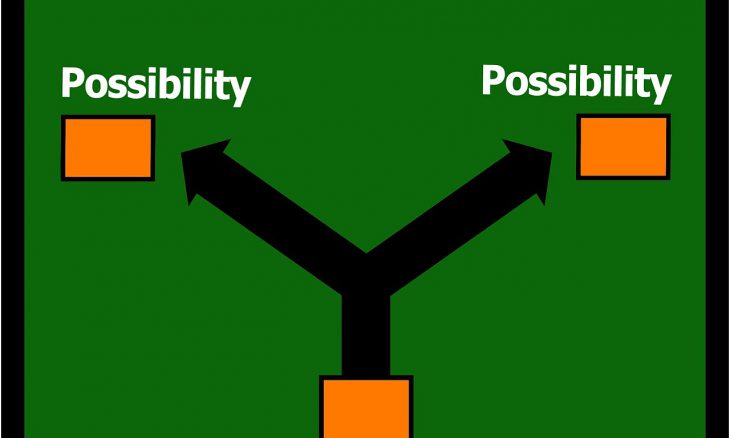Advertising surrounds consumers but it is harder and harder to get their attention. And how do you get your ad into their iPods anyway? As consumers increasingly have control of what, when, and how to consume content, where does advertising fit in? This monthr’s Biznology newsletter explains what to do when you are “Marketing in a World of Choice.”
The media game has changed. The old TV networks have been attacked by cable, satellite, and Tivo. Radio went from AM to FM to XM to the Internet to podcasting. Newspapers are feeling the heat from free information on the Web. Mega-bookstores and Amazon stock more books than any store did a generation ago. Music has gone from CD albums to MP3s bought from Apple for 99 cents a song.
What do all of these trends have in common? Consumer choice. The theory of the long tailasserts that technology eventually fragments mass media, allowing consumer tastes to be more and more specialized. Twenty years ago, some cities did not have even one sports talk show on the air. Today, ESPN airs several channels devoted to nothing but sports, and sports talk radio is in every major city. Books too specialized to even be published a generation ago can now be marketed on the Internet, and printed on demand or self-published. Instead of deciding whether to buy a CD because of one song, consumers now buy the one song.
The Consumer’s Choice of Content
What does the long tail mean to marketers? It means you need to work much harder. In bygone days, you could buy a commercial on a hit TV show and get 40% of the available viewers. Now, you might have to buy advertising on three (or even more) shows to get the same impact. As you might expect, that’s a lot more work. The long tail means that you may have to buy ads on thousands of blogs instead of in one very popular newspaper.
How do you find these blogs? How can you negotiate all those insertion orders? You use an aggregator. In some ways, this is no different than the role that advertising agencies have always played. But today’s aggregators are different from traditional ad agencies. Ad agencies aggregate with people while Google aggregates with technology—a crucial difference with the long tail, because Google can aggregate almost infinitely at the same cost, whereas ad agencies quickly reach a point of no return (on investment). People don’t scale, but computer systems do. Because the long tail is so long, it is all about scaling.
So Google aggregates all those blogs into a few keyword buys—the advertiser never needs to know where his ad appears. As long as the clicks get delivered from qualified people, that’s enough.
The Consumer’s Choice of Consumption
Consumers have a second choice beyond content—they may now choose when they consume the content. Tivo has changed “appointment TV” to “whenever I want it” TV. Apple’s iPod took music once chosen by a radio DJ and has made it available on a personal jukebox. But what does that mean to the marketer?
John Battelle, in his book The Search, called Tivo “search for television” and iPod “search for music”—highlighting how consumers can now decide when to consume media the same way they consume Web content, by cranking up a Google search. Web surfers want to know something, so they search. Tivo and iPod enable the same consumer behavior for other media, and technology will continue to make that more common.
Cammie Dunaway, the CMO of Yahoo! points out the steady progression of “Mass Media to Digital Media to My Media.” The long tail is the result of mass media moving to digital media, where there is such a low cost of inventory that virtually everything ever made can be available. But technology also allows consumers to choose how and when to consume the media—that’s the my media element.
The Consumer’s Choice of Advertising
Consumers have a third choice, which in many ways is the most important to marketers. Tivo and iPod provide more than choice of timing—they offer commercial-free consumption. Satellite radio and premium cable channels do the same. What does this new consumer choice mean to advertisers?
Seth Godin identifies this choice as the shift from Interruption Marketing to Permission Marketing. Traditional advertising interrupts what the consumer is doing to show the ad—commercials during the TV show, for example. Permission marketing is different, depending on consumers allowing marketers to provide their message through some kind of “opt in.”
The Marketer’s Next Move
So consumers can now choose from any content at any time with no advertising. How do marketers respond to these new consumer choices? One answer to all three is search marketing.
Because searchers can name anything they are interested in, search marketing is perfect for the long tail. Savvy search marketers bid on less popular (and therefore lower-cost) search keywords—they can aggregate the traffic from many keywords at much lower cost than buying one megakeyword.
Because Google is available anytime, it’s perfect for consumers that want what they want when they want it. In fact, search is one of the rare ways that customers can tell your company exactly what they are interested in at the moment it suits their fancy.
Because search meets consumers at their point of need, searchers are actually choosing to receive your marketing message. You will never have a more qualified prospect than one who is searching for an answer. You need it to be your answer. But to capture that customer, you must satisfy his need for information, which is not the same as choosing your marketing message for that demographic group. Only when you have satisfied the searcher’s need for information can you try to “spin” your message to him.






